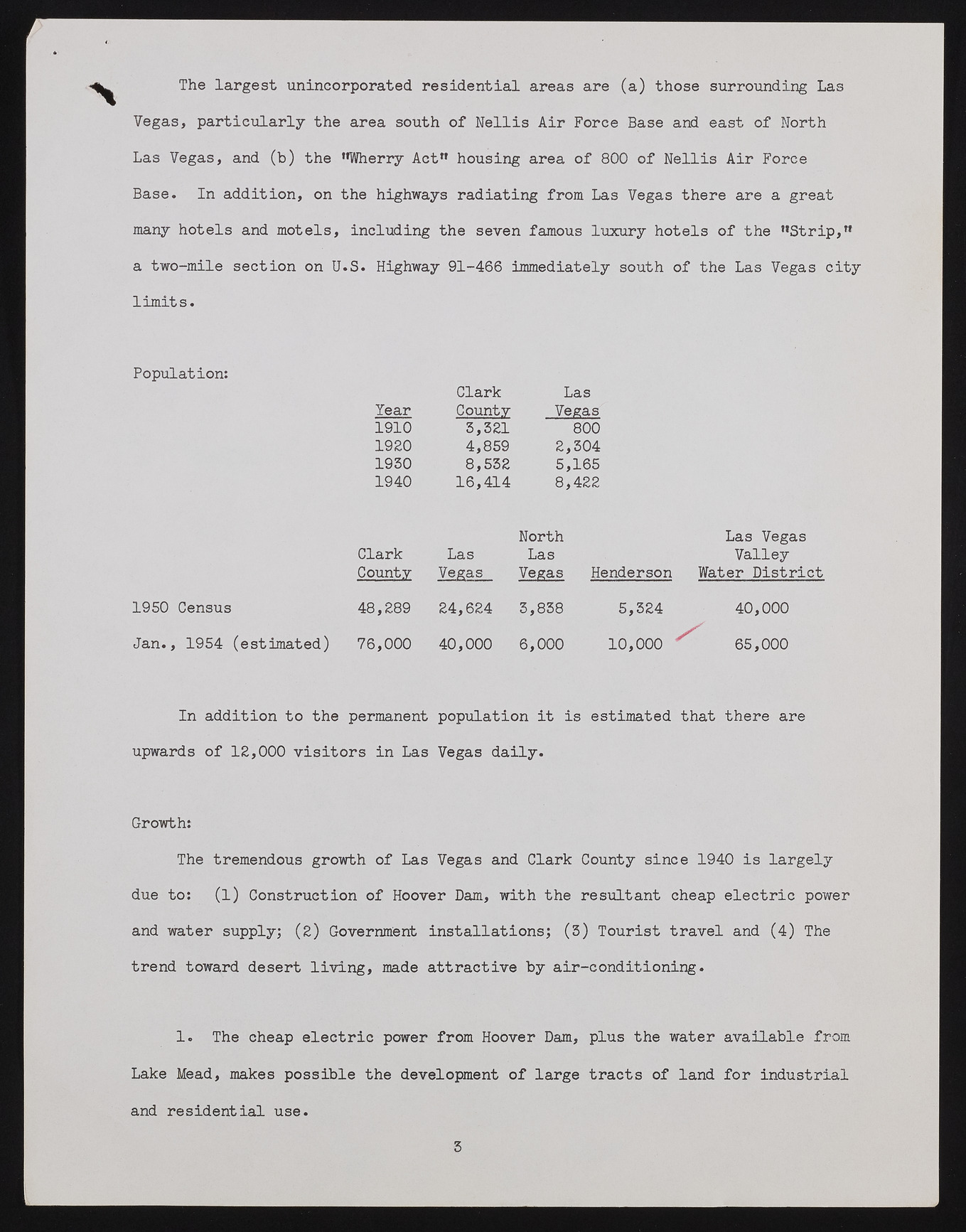Copyright & Fair-use Agreement
UNLV Special Collections provides copies of materials to facilitate private study, scholarship, or research. Material not in the public domain may be used according to fair use of copyrighted materials as defined by copyright law. Please cite us.
Please note that UNLV may not own the copyright to these materials and cannot provide permission to publish or distribute materials when UNLV is not the copyright holder. The user is solely responsible for determining the copyright status of materials and obtaining permission to use material from the copyright holder and for determining whether any permissions relating to any other rights are necessary for the intended use, and for obtaining all required permissions beyond that allowed by fair use.
Read more about our reproduction and use policy.
I agree.Information
Digital ID
Permalink
Details
More Info
Rights
Digital Provenance
Publisher
Transcription
The largest unincorporated residential areas are (a) those surrounding Las Vegas, particularly the area south of Nellis Air Force Base and east of North Las Vegas, and (b) the "Wherry Act" housing area of 800 of Nellis Air Force Base. In addition, on the highways radiating from Las Vegas there are a great many hotels and motels, including the seven famous luxury hotels of the "Strip," a two-mile section on U.S. Highway 91-466 immediately south of the Las Vegas city limits. Population: 1950 Census Jan., 1954 (estimated) Clark Las Year County Vegas 1910 3,321 800 1920 4,859 2,304 1930 8,532 5,165 1940 16,414 8,422 North Las Vegas Clark Las Las Valley County Vegas Vegas Henderson Water District 48,289 24,624 3,838 5,324 40,000 76,000 40,000 6,000 10,000 ^ 65,000 In addition to the permanent population it is estimated that there are upwards of 12,000 visitors in Las Vegas daily. Growth: The tremendous growth of Las Vegas and Clark County since 1940 is largely due to: (l) Construction of Hoover Dam, with the resultant cheap electric power and water supply; (2) Government installations; (3) Tourist travel and (4) The trend toward desert living, made attractive by air-conditioning. 1. The cheap electric power from Hoover Dam, plus the water available from Lake Mead, makes possible the development of large tracts of land for industrial and residential use. 3

